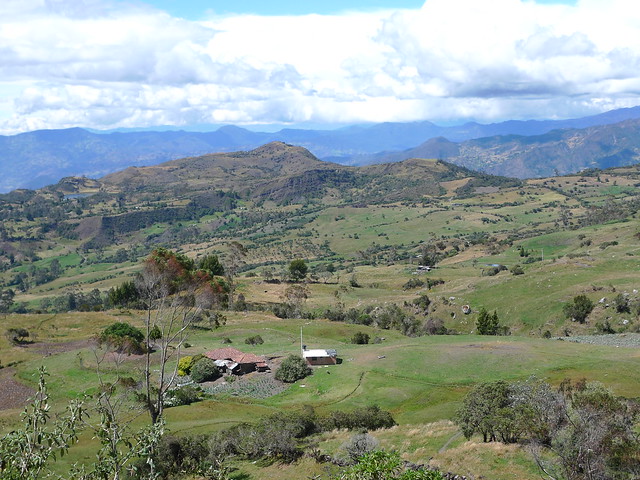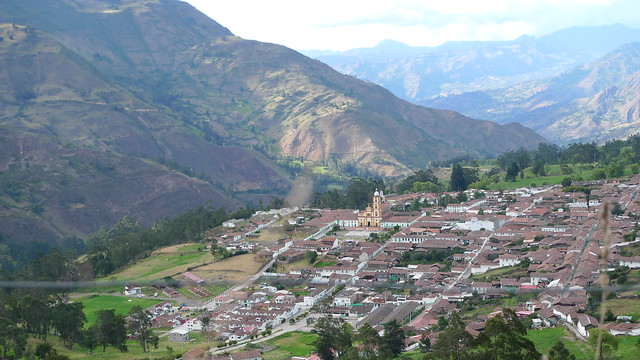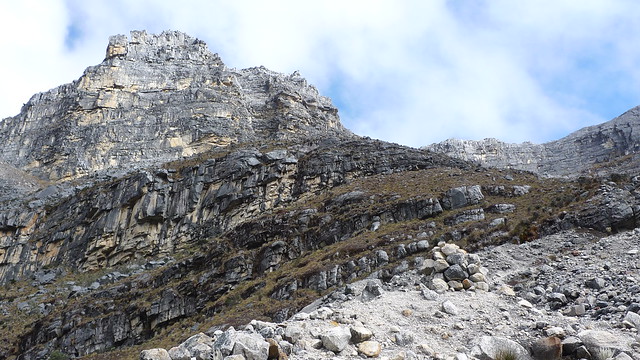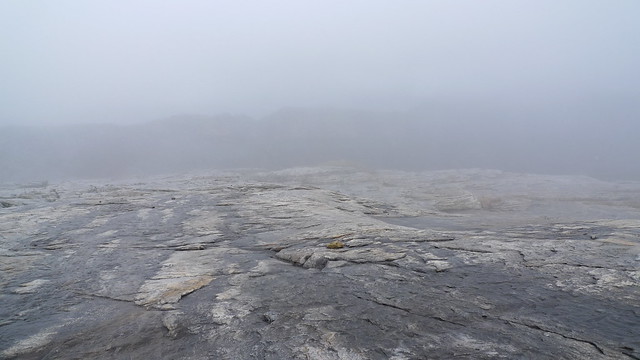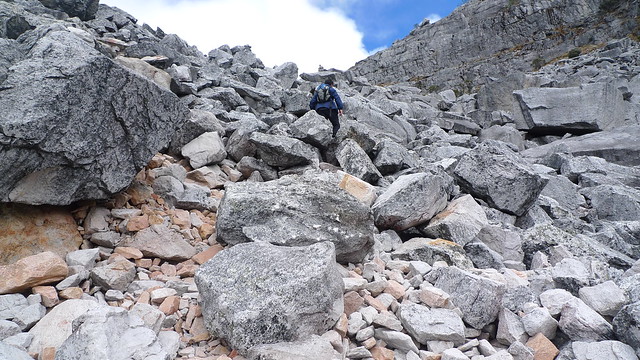Many thanks go to Frommers.com for publishing their walking tours of New Orleans on their Web site. The following are photos I took while doing their self-guided walking tour of the French Quarter. I’ve edited the copy slightly to match what I saw. Feel free to email me if I made a mistake on something.
The guide estimated the walk to take about an hour and a half but it took me about three hours because I was taking a lot of pictures. The guide also recommends that you do this walk very early in the morning before the revelers start drinking on Bourbon Street. I did this during the Saints-Giants match in the middle of a Sunday and the streets were eerily empty because everyone was indoors watching football. I finished as soon as the Saints destroyed my New York team and quickly ran back to my room at the Omni Royal Hotel to avoid the celebratory scene.
Click here for the map of this tour. Begin at the intersection of Royal and Bienville streets.
1. 343 Royal Street, Rillieux-Waldhorn House

Established in 1881, this house is also known as the Waldhorn & Adler Antique store. The building was built between 1795 and 1800 for Vincent Rillieux, the great-grandfather of the French Impressionist artist Edgar Degas. The wrought-iron balcony is a good example of excellent Spanish colonial workmanship.
2. 334 Royal Street, The Bank of Louisiana

Across the street from Waldhorn & Adler, this old bank was erected in 1826 by Philip Hamblet and Tobias Bickle after the designs of Benjamin Fox. Its Greek Revival edifice was erected in the early 1860s after it suffered its second of third fires. It has also served as the Louisiana State Capitol, an auction exchange, a criminal court, a juvenile court and a social hall for the American Legion. It now houses the police station for the Vieux Carré.
3. Cross Conti Street to 403 Royal Street, Louisiana State Bank

Benjamin H. B. Latrobe died of yellow fever shortly after completing designs for this 1821 building. He had already designed the Bank of Pennsylvania in Philadelphia and contributed to the design of the U.S. Capitol at the time of his death. You can see the monogram “LSB” on the Creole-style iron balcony railing.
4. 417 Royal Street, Brennan’s Restaurant

The structure was erected in 1855 after the fire of 1794 destroyed more than 200 of the original buildings along this street. The world-famous chess champion Paul Charles Morphy moved here as a child in 1841. The parents of Edgar Degas also lived here.
5. 437 Royal Street, home of the “cocktail”
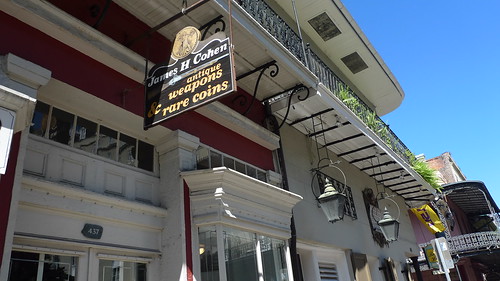
Owner and druggist Antoine A. Peychaud served after-meeting drinks of bitters and cognac to lodge members in small egg cups, whose French name, coquetier, was Americanized to “cocktail.”
6. 400 Royal Street, New Orleans Court Building
Built in 1909, this courthouse covers the length of the block across from Brennan’s. The baroque edifice is made of Georgia marble and many Spanish-era structures were demolished to make way for it. It is now the home of the Louisiana Supreme Court and the Fourth Circuit Court of Appeals.

7. Cross St. Louis Street to 520 Royal Street, the Brulatour Court

This structure was built in 1816 as a home for François Seignouret, a furniture maker and wine importer from Bordeaux. His furniture all had an “S” carved into them and you can see the same on the fan-shaped guard screen, or garde de frise, on the third floor balcony.
8. 533 Royal Street, the Merieult House

Built for the merchant Jean François Merieult in 1792, this house was the only building in the area left standing after the fire of 1794. Legend has it that Napoleon repeatedly offered Madame Merieult a lot of money in exchange for her hair to present a wig to a Turkish sultan. Nowadays, it’s home to the Historic New Orleans Collection-Museum/Research Center.
9. Cross Toulouse Street to 613 Royal Street, the Court of Two Sisters

This was built in 1832 for a local bank president on the site of the 18th-century home of a French governor. The two sisters were Emma and Bertha Camors and their father owned the building. From 1886 to 1906, they ran a curio store.
10. 627 Royal Street, Adelina Patti’s Court

This 1777 building, the former home of the Old Town Praline Shop, is where opera singer Adelina Patti became a local heroine in 1860. The 17-year-old girl’s popularity as a last-minute stand-in lead soprano saved the local opera company from financial ruin.
11. 640 Royal Street, Le Monnier Mansion

This structure was the city’s first “skyscraper” and was all of three stories high when it was built in 1811. A fourth story was added in 1876. George W. Cable, the celebrated author of Old Creole Days, chose this building as the residence of his fictional hero, Sieur George.
12. Cross St. Peter Street to 700 Royal Street, the LaBranche House

This building is probably the most photographed building in the French Quarter for its lacy cast-iron grillwork and oak leaf and acorn design. There are actually eleven LaBranche buildings in the city: eight face St. Peter Street, one faces Royal and two face Pirates Alley.
13. Turn left at St. Peter Street and continue to 714 St. Peter Street, Antoine’s Restaurant

Built in 1829 by a prominent physician, this was a boardinghouse run by Antoine Alciatore for several years during the 1860s. His cooking became so popular with the locals that he eventually gave up catering to open the famous Antoine’s Restaurant, still operated today by his descendants.
14. 718 St. Peter Street, Pat O’Brien’s

One of the city’s most famous spot for Hurricane drinks, the building was completed in 1790 for a wealthy planter and was known as the Maison de Flechier. Later, Louis Tabary put on popular plays here. It’s said that the first grand opera in America was performed within these walls.
15. 726 St. Peter Street, Preservation Hall

Erle Stanley Gardner, Perry Mason’s creator, lived in an apartment above the Hall where people still go to hear New Orleans jazz.
16. 730 St. Peter Street, Plique-LaBranche House

This house was built in 1825, sold to Giraud M. Plique in 1827, and sold to Jean Baptiste LaBranche in 1829. The wrought-iron balcony dates from the 1820s. This is believed to be the site of New Orleans’s first theater but is the subject of some debate.
Continue up St. Peter Street until you reach Bourbon Street. Turn left onto Bourbon Street.
17. 623 Bourbon Street

Tennessee Williams and Truman Capote lived in this house–not together, mind you. It’s owned by Lindy Boggs, a much-beloved local politician (and mother of NPR and ABC commentator Cokie Roberts), who took over her husband’s Congressional seat after his death. At last, a building with names attached to it I recognize!
Turn around and head the other way down Bourbon Street. At the corner of Bourbon and Orleans streets, look down Orleans Street, toward the river, at:
18. 717 Orleans Street, Bourbon Orleans Hotel

This building was the site of the famous quadroon balls, where wealthy white men would acquire free women of color as mistresses. Funnily enough, it later became a convent, home to the Sisters of the Holy Family, the second-oldest order of black nuns in the country.
Turn left onto Orleans and follow it a block to Dauphine Street. On the corner is:
19. 716 Dauphine Street, Le Pretre Mansion

In 1839 Jean Baptiste Le Pretre bought this 1836 Greek Revival house and added the romantic cast-iron galleries. The house is the subject of a real-life horror story: in the 19th century, a Turk, supposedly the brother of a sultan, arrived in New Orleans and rented the Le Pretre house. One night, shrieks came from inside the house; the next morning, neighbors entered and found the tenant’s body lying in a pool of blood surrounded by the bodies of young girls believed to have been stolen from the sultan. Local ghost experts say you can hear exotic music and shrieks on the right night. Oooh.
Turn right on Dauphine Street and go two blocks to Dumaine Street and then turn right. You’ll find an interesting little cottage at:
20. 707 Dumaine Street

After the 1794 fire, all houses in the French Quarter were required by law to have flat tile roofs. Most have since been covered with conventional roofs, but this Spanish colonial cottage is still in compliance with the flat-roof rule.
21. 632 Dumaine Street, Madame John’s Legacy

This structure was once thought to be the oldest building on the Mississippi River. The house was originally erected in 1726, eight years after the founding of New Orleans. The present structure is a fine example of a French “raised cottage.”
Take a left at the corner of Dumaine and Chartres streets and follow Chartres to the next corner; make a left onto St. Philip Street and continue to the corner of St. Philip and Bourbon streets to:
22. 941 Bourbon Street, Lafitte’s Blacksmith Shop
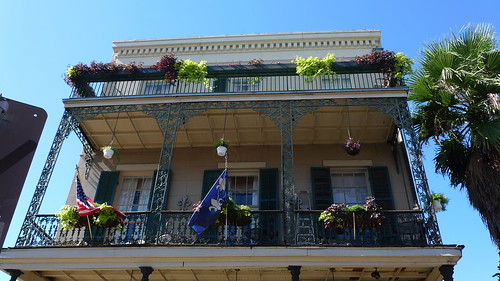
Legend says that Jean Lafitte and his pirates posed as blacksmiths here while using it as headquarters for selling goods they’d plundered on the high seas. It has survived in its original condition, reflecting the architectural influence of French colonials who escaped St. Domingue in the late 1700s. Unfortunately, the exterior has been redone to replicate the original brick and plaster, which makes it look fake when it’s actually not.
Turn right onto Bourbon Street and follow it two blocks to Governor Nicholls Street. Turn right to:
23. 721 Governor Nicholls Street, The Thierry House

The structure was built in 1814 and announced the arrival of the Greek Revival style of architecture in New Orleans. It was designed in part by architect Henry S. Boneval Latrobe, son of Benjamin H. B. Latrobe, when he was 19 years old.
Cross Royal Street to:
24. 618-630 Governor Nicholls Street

Henry Clay’s brother, John, built a house for his wife here in 1828, and in 1871 a two-story building was added at the rear of its garden. In the rear building Frances Xavier Cabrini (now a Catholic saint) ran a school.
Backtrack to the corner of Royal and Governor Nicholls streets. Take a left onto Royal and look for:
25. 1140 Royal Street, the Lalaurie Home

Many people simply refer to this place as “the haunted house.” Madame Delphine Macarty de Lopez Blanque wed Dr. Louis Lalaurie as her third husband after being widowed twice before. The Lalauries moved into this residence in 1832, and they soon were impressing the city with extravagant parties. One night in 1834, however, fire broke out and neighbors crashed through a locked door to find seven chained starving slaves. The sight, combined with Delphine’s stories of past slaves having “committed suicide,” enraged her neighbors. Madame Lalaurie and her family escaped a mob’s wrath and fled to Paris. Through the years, stories have circulated of ghosts inhabiting the building, especially that of one young slave child who fell from the roof trying to escape Delphine’s cruelties.
26. 1132 Royal Street, Gallier House Museum

This house was built in 1857 by James Gallier, Jr., as his residence. Gallier and his father were two of the city’s leading architects. Anne Rice was thinking of this house when she described where Lestat and Louis lived in Interview with the Vampire.
Turn left onto Ursulines Street, toward the river. At the corner of Ursulines and Chartres streets is:
27. 1113 Chartres Street, Beauregard-Keyes House

This “raised cottage” was built as a residence in 1826 by Joseph Le Carpentier.
28. Old Ursuline Convent and the Archiepiscopal Residence

29. Turn left on to Chartres Street and continue walking until you get to Esplanade Avenue, one of the city’s most picturesque historic thoroughfares. Some of the grandest town houses built in the late 1800s grace this wide, tree-lined avenue.

Follow Esplanade toward the river and turn right at the corner of North Peters Street. Follow North Peters until it intersects with Decatur Street. You’ll see the Old French Market which now houses a flea market for souvenir items. I took a quick break here and bought a peach-banana smoothie.
When you leave the French Market, exit on the side away from the river onto:
30. Decatur Street
Not long ago, this section of Decatur — from Jackson Square all the way over to Esplanade — was a seedy, run-down area of wild bars and cheap rooming houses. Fortunately, few of either remain. Instead, this portion of the strip has fallen into step with the rest of the Quarter, sporting a number of restaurants and noisy bars. Among my favorites: Molly’s at the Market and d.b.a.

Decatur Street will take you to Jackson Square. Turn right onto St. Ann Street; the twin four-story, redbrick buildings here and on the St. Peter Street side of the square are:
31. The Pontalba Buildings

These buildings sport some of the most impressive cast-iron balcony railings in the French Quarter. They also represent one of the first eras of revitalization in the Quarter. In the mid-1800s, Baroness Micaela Almonester Pontalba inherited rows of buildings along both sides of the Place d’Armes from her father, Don Almonester, who had been responsible for rebuilding the St. Louis Cathedral. You can see her mark today in the entwined initials “A.P.” in the ironwork. The buildings were designed in a traditional Creole-European style.
32. Jackson Square

Baroness Pontalba is also responsible for the current design of Jackson Square, including the cast-iron fence and the equestrian statue of Andrew Jackson.
At the corner of St. Ann and Chartres Streets, turn left and continue around Jackson Square; you will see:
33. St. Louis Cathedral

The building standing here today is the third erected on this spot — the first was destroyed by a hurricane in 1722, the second by fire in 1788. The cathedral was rebuilt in 1794; the central tower was later designed by Henry S. Boneval Latrobe, and the building was remodeled and enlarged between 1845 and 1851.
On the other side of the cathedral, you’ll come to Pirates Alley. Go right down Pirates Alley to:
34. 624 Pirates Alley, Faulkner House Books

In 1925 William Faulkner lived here and worked on his first novels, Mosquitoes and Soldiers’ Pay. While here, he contributed to the Times-Picayune and to a literary magazine called the Double Dealer. I ended up buying the least classic book here recommended by a cab driver, French Desired Children, a funny anecdote on New Orleans street names.
To the left of the bookstore is a small alley that takes you to St. Peter Street, which is behind and parallel to Pirate’s Alley.
35. 632 Royal Street, Tennessee Williams House

The second-story wrought-iron balcony is where Tennessee Williams wrote A Streetcar Named Desire. How cool is that, Stellaaaaaaa?
Return to Jackson Square. On the left side of the cathedral on the corner of Chartres and St. Peter streets (with your back to the Mississippi River and Jackson Square) is:
36. The Cabildo
In the 1750s this was the site of a French police station and guardhouse. Part of that building was incorporated into the original Cabildo, statehouse of the Spanish governing body (the “Very Illustrious Cabildo”). The Cabildo was still under reconstruction when the transfer papers for the Louisiana Purchase were signed in a room on the second floor in 1803. Since then, it has served as New Orleans’s City Hall, the Louisiana State Supreme Court, and since 1911, a facility of the Louisiana State Museum.
The small Civil War cannons out front look ineffective by modern standards, but in 1921, it was loaded with powder, an iron ball was rammed down its muzzle and was fired in the dead of night as a prank. That missile traveled from the Cabildo’s portico across the wide expanse of the Mississippi and some 6 blocks inland before landing in a house in Algiers, narrowly missing its occupants.

Now go back across Jackson Square and Decatur Street to
37. 813 Decatur Street, Café du Monde
No trip to New Orleans is complete without a leisurely stop here for beignets and coffee.
Related post/s:
Buy your own copy Frommer’s New Orleans
A collection of New Orleans travel photos on Flickr

